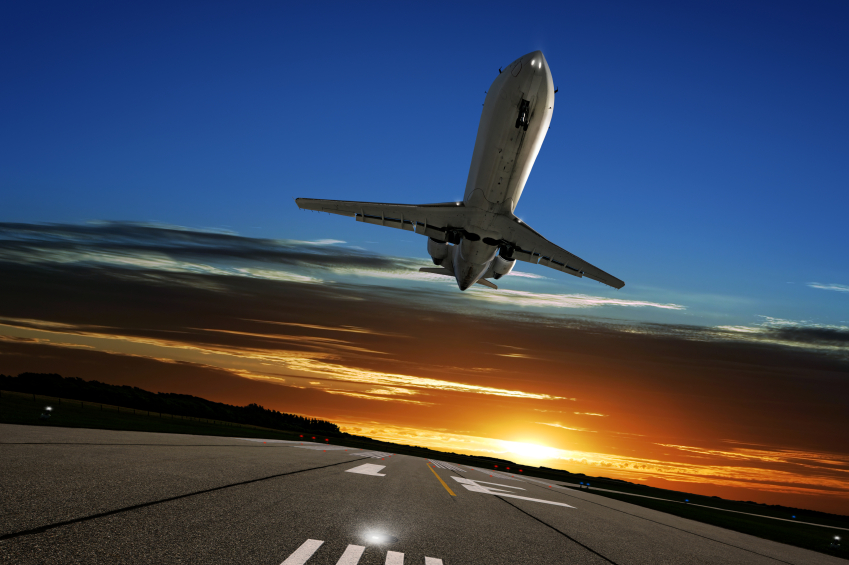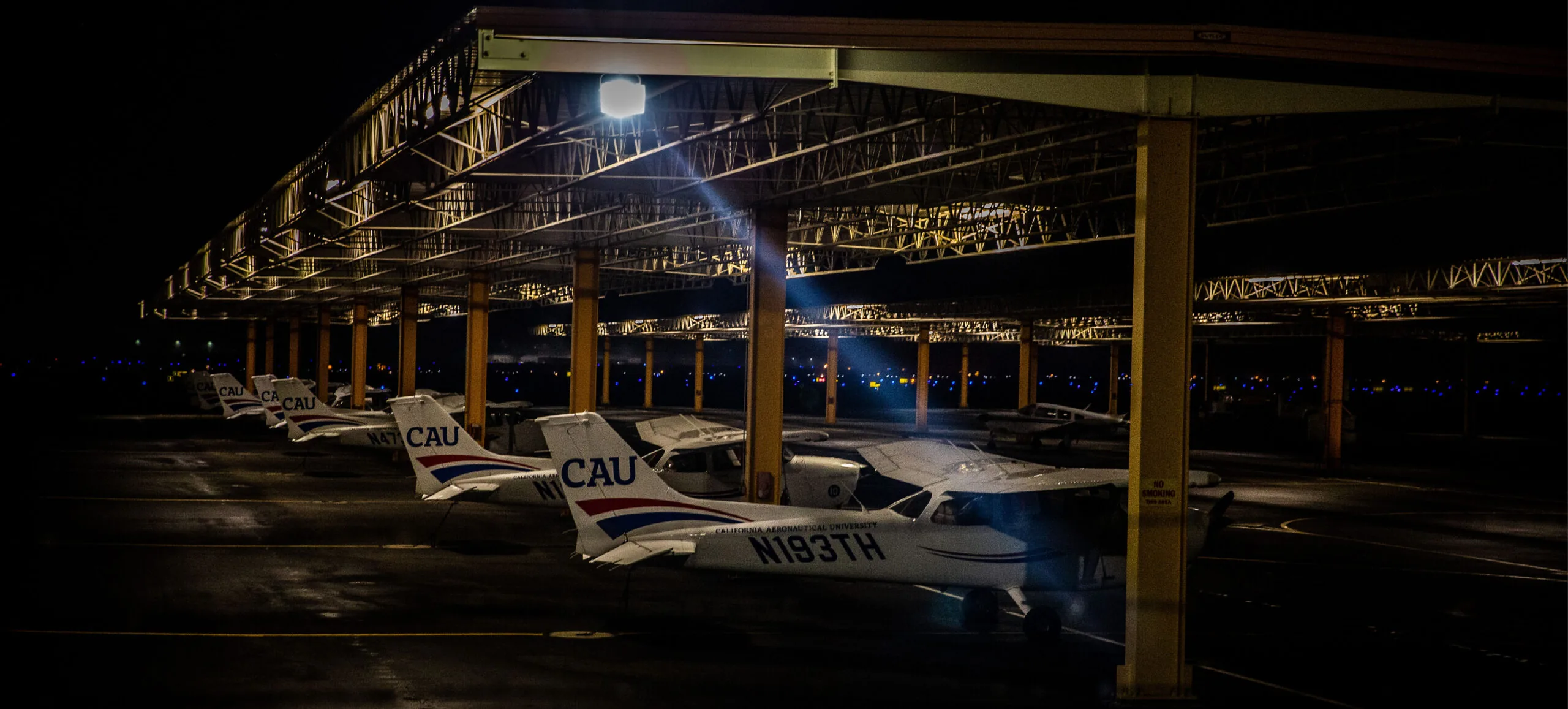Night flying poses different risks and considerations than flying during the day – here are 4 surprising facts about flying at night.
For the general public, “flying at night” means trying (and usually failing) to get some sleep in an uncomfortable, tiny seat while not bothering one’s row neighbors on either side. It usually makes for a tiring trip and maybe even some jet lag. In the world of private and corporate flying, however, “night flying” makes for an entirely different set of rules.
Student pilots know it will require different considerations, even though long time pilots are well aware that in some ways, flying at night is actually safer than in the day. Some prefer night flying no matter the circumstances, enjoying the light show while the world sleeps below.
1) Not Everyone Is Allowed to Do It—Even After Earning a Private Pilot’s Certificate
Many are surprised to learn that pilots might not be able to fly at night. Some are not legally permitted to do so. In the United States, the Federal Aviation Administration (FAA) expects pilots to maintain night currency. In the United States, everybody with a certificate in good standing can fly at night if they have completed three landings to a full stop after dark within the last 90 days. This is called night landing currency.
Newly minted private pilots (and even those who may have been flying for quite some time) may fly only under what is known as VFR (visual flight rules) conditions, even at night. Pilots who have not earned their instrument rating are legally permitted to fly only when conditions are clear enough to rely on visual references. When it is cloudy at night, IFR rules (instrument flight rules) go into effect, just like during the day.
European fans of the British car show Top Gear learned about non-US flying rules in disappointing fashion when its presenters raced one another in a car vs. airplane faceoff. Jeremy Clarkson took a Bugatti Veyron from Alba, Italy, to London, and his co-hosts, James May and Richard Hammond, made the same route in a Cessna 182. While it might seem the Cessna was the obvious choice to make it to the finish line first, the car won.
Why? May, who was piloting the Cessna, was forced to not only stop for fuel as the race stretched on, he was also not legally permitted to fly at night. Quite aware that May was on film as the pilot in command, the pair needed to land before sunset, then make do with a train and a bus.
2) In Some Circumstances, It Is Safer
While some might assume that flying at night is inherently dangerous, in a few ways, it makes for less work for the crew and actually improves a few safety factors. Pilots who have flown at night know that illuminated runways make for easier landings, and lighted instrument panels or glass cockpits are generally less difficult to see in the dark.
In some areas, especially those with humid or highly changeable weather patterns, severe weather is less common in the cooler temperatures of night. In addition, with the air not as hot, the aircraft usually performs better, and in smoother air. Unless it is snowing or raining, the visibility is typically better at night, as pollution and haze are typically not as much of a factor.
International passenger jet pilots and those carrying cargo sometimes enjoy crossing the ocean at night. High frequency signals tend to travel farther, and emergency lights are easier to see. In various parts of Europe, only more experienced pilots are capable of night flying. In other countries, particularly Africa, no general aviation is permitted after dark. The reduced congestion usually means less traffic to dodge.
After busy day hours, pilots usually have an easier time finding a gate or place to park the airplane, and taxiway lights help crews find it from the runway. Colored lights on the runway indicate various waypoints. First responders and members of the military also have extra navigational aids to help them to fly safely at night. Night vision goggles and runway light configurations are useful to all aviators in assessing glide slope. In fact, thanks to flood lights and careful configuring, even the space shuttle orbiter was able to land after dark.
3) Night Vision Limitations Affect Everyone
Despite lit displays, people see differently in the dark, particularly at high altitudes. The night vision function of the human eye requires a great deal of oxygen. At cabin altitudes above 5,000 feet, our night vision becomes less effective. When flying at night, then, pilots should be aware that their night vision will degrade, even if they are young and do not normally wear glasses. Therefore, when looking at charts or instruments, they should take care that they are accurately interpreting what they are seeing.
4) Human Beings Are Still Not Programmed to Operate at Night
Although humanity has enjoyed electric lights and the extended day it has created for quite some time, that does not mean that we are any more inclined to naturally operate after dark. In many ways, pilots who fly at night, even if they are used to taking “third shift,” are fighting nature. Flying over large expanses of dark land or water can generate feelings of sleepiness, loneliness, or even increased fear. A warm cockpit pushing for hours through a rainy night, combined with the drone of a prop or jet engine, can be dangerous where drowsiness is concerned. In this way, pilots are just as much at risk than truckers, but without the occasional passing car or text message to jolt them awake.
Before getting into the cockpit, pilots must carefully assess their well-being. This means they should avoid night flying while feeling ill, upset, angry, or tired. “Flying tired” is a major safety issue that has only recently become a factor in preflight checklists. When a pilot readies his or her equipment and ensures it is safe, he or she should include mental and physical health in the consideration.
Ready to soar in your aviation career?
Mr. Matthew A. Johnston has over 23 years of experience serving various roles in education and is currently serving as the President of California Aeronautical University. He maintains memberships and is a supporting participant with several aviation promoting and advocacy associations including University Aviation Association (UAA), Regional Airline Association (RAA), AOPA, NBAA, and EAA with the Young Eagles program. He is proud of his collaboration with airlines, aviation businesses and individual aviation professionals who are working with him to develop California Aeronautical University as a leader in educating aviation professionals.

